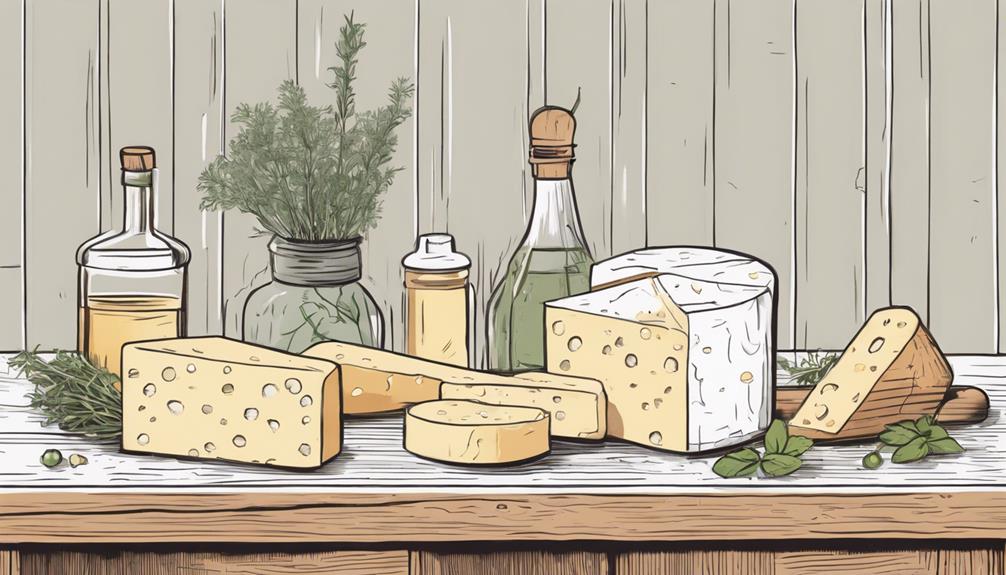How To Become More Self-Sufficient Without Starting a Full-Blown Farm…
Want to start preserving your harvest, making your own soap, or building a backyard root cellar — but not sure where to begin? “Homesteading Advice” gives you instant lifetime access to 35+ practical homesteading books on food preservation, veggie gardening, DIY natural cleaning products (save over $250 per year with this skill alone), brewing, off-grid energy, and a whole lot more…
Click Here To Check It Out Now!
“Hi, I’m having some trouble with my homemade cheese. Lately, it keeps turning out oily when I cut into it, and I’m not sure what I’m doing wrong. I try to control the temperature and follow the recipes, but something seems off. Could you help me figure out how to prevent my cheese from becoming oily?” Thanks, John, Dallas, USA.
How Do I Prevent Cheese From Becoming Oily?
Hey John, it sounds like you’re really putting in the effort with your cheese making! Let’s dive into what might be causing this oily issue and how you can address it. Oily cheese can be the result of several factors, including milk quality, temperature control, and even the type of cheese you’re making. Here’s a detailed guide on how to prevent it.
Understanding the Basics
First off, it’s worth mentioning that some cheese types are naturally oilier than others. However, if the oiliness is excessive, it typically points to issues during the cheese-making process. Let’s break down the contributing factors:
Milk Quality
The quality of your milk plays a significant role. Here’s what you should consider:
- Fat Content: Milk with a very high fat content can lead to greasy cheese. Opt for milk with a balanced fat percentage, generally around 3.5%.
- Freshness: Fresh milk is less likely to separate and turn oily compared to older milk. Make sure your milk is as fresh as possible.
- Pasteurized vs. Raw: Both types can be used, but they behave differently. Pasteurized milk might require calcium chloride for better curd formation, which can help in reducing oiliness.
Temperature Control
Temperature is crucial during the cheese-making process. Here are key points to watch for:
- Heating Milk: Gradually heat your milk to the desired temperature, usually around 32-34°C (90-93°F) depending on the recipe. Rapid heating can cause fat separation.
- Curb Temperature During Curd Cutting: Allow the curd to set at optimal room temperature. Too high temperatures can lead to excessive whey expulsion, making the cheese oily.
- Aging Temperature: For aged cheeses, maintain a constant, cool temperature. Temperature fluctuations can affect the fat distribution, leading to oiliness.
Rennet and Culture Use
These ingredients are fundamental to cheese structure, so their correct use is essential:
- Rennet Amount: Using too much rennet can cause the curd to dehydrate faster, leading to fat loss and oily cheese. Stick to the recommended amount in your recipe.
- Culture Selection: Different cultures affect the fat breakdown differently. A balanced culture formulation helps maintain a smoother, less oily texture.
Curd Handling
Your curd handling technique also matters:
- Cutting Curd: Cut the curd gently and uniformly. Irregular curd sizes can lead to uneven whey expulsion and fat separation.
- Stirring: Stir the curd gently during cooking. Vigorous stirring can break the curd too much, causing fat loss.
- Drain Properly: Make sure the curd is well-drained but not overly so. Over-draining can cause the cheese to lose its moisture, leading to an oily texture.
Pressing and Brining
The steps post-curd formation are just as essential:
- Pressing Pressure: Apply consistent, moderate pressure during pressing. Too much pressure can squeeze out fat along with whey, leading to oiliness.
- Brine Solution: Use a well-balanced brine solution for salted cheeses. Too much salt can extract moisture and fat, leading to an imbalance and oiliness.
Aging Process
Finally, aging can influence your cheese’s texture greatly. Here’s what you can do:
- Humidity Control: Maintain correct humidity levels, typically between 80-85%. Too low humidity can cause dehydration, while too high can encourage unhealthy mold growth.
- Turning Cheese: Regularly turn the cheese to ensure even moisture and fat distribution.
Common Pitfalls to Avoid
Here are a few mistakes to look out for:
- Skipping Steps: Ensure every step in the recipe is followed precisely. Skipping steps can lead to imbalances in moisture and fat content.
- Incorrect Measurements: Accurate measurements of ingredients and exact timing during steps can prevent many issues.
- Poor Storage Conditions: Store your cheese in ideal conditions to prevent spoilage and oiliness.
Specific Cheese Types and Tips
Certain cheese types require unique considerations. Here are some popular ones:
Cheddar
- Flipping During Aging: Flip Cheddar regularly during aging to ensure even fat distribution.
- Cloth Binding: Cloth-wrapping helps in regulating moisture loss, preventing oiliness.
Brie and Camembert
- Regular Spraying: Spray the aging environment to maintain humidity and prevent surface dehydration.
- Mold Renewal: Keep an eye on mold development, evenly distributed mold improves texture consistency.
Gouda
- Wax Coating: Applying wax prevents moisture loss and keeps the cheese rindless, reducing oiliness.
- Flavor Development: Balance flavor development by monitoring temperature and humidity closely.
Practical Tips and Tricks
Finally, here’s a collection of practical tips you can apply:
- Use Cheese Mats: During aging, use cheese mats to ensure better airflow around the cheese, preventing moisture buildup and oiliness.
- Check PH: Regularly check pH levels of milk and curd. Correct pH helps in forming a consistent curd structure.
Final Thoughts…
John, preventing your cheese from becoming oily involves a mix of good milk quality, precise temperature control, proper curd handling, and good aging practices. Addressing these factors should help in producing a well-balanced and flavorful cheese. Thanks for reaching out, and happy cheese making!

